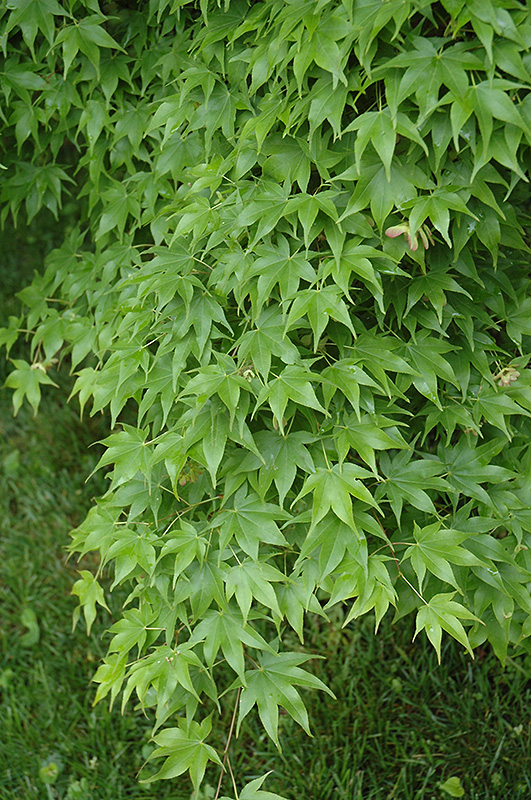Find Plants
Hogyoku Japanese Maple
Acer palmatum 'Hogyoku'
Height: 15 feet
Spread: 15 feet
Sunlight:
![]()
![]()
Hardiness Zone: 6
Group/Class: Amoenum
Description:
A variety with attractive green leaves that taper to a point, turning a delightful orange to red in fall; a vigorous grower that's more adaptable to diverse growing conditions than many others of this species
Ornamental Features
Hogyoku Japanese Maple is primarily valued in the landscape for its ornamental upright and spreading habit of growth. It has attractive green deciduous foliage. The pointy palmate leaves are highly ornamental and turn outstanding shades of orange and in the fall.
Landscape Attributes
Hogyoku Japanese Maple is a deciduous tree with an upright spreading habit of growth. Its relatively fine texture sets it apart from other landscape plants with less refined foliage.
This is a relatively low maintenance tree, and should only be pruned in summer after the leaves have fully developed, as it may 'bleed' sap if pruned in late winter or early spring. It has no significant negative characteristics.
Hogyoku Japanese Maple is recommended for the following landscape applications;
- Accent
- Shade
- Mass Planting
- Hedges/Screening
- General Garden Use
Planting & Growing
Hogyoku Japanese Maple will grow to be about 15 feet tall at maturity, with a spread of 15 feet. It has a low canopy with a typical clearance of 2 feet from the ground, and is suitable for planting under power lines. It grows at a slow rate, and under ideal conditions can be expected to live for 60 years or more.
This tree does best in full sun to partial shade. You may want to keep it away from hot, dry locations that receive direct afternoon sun or which get reflected sunlight, such as against the south side of a white wall. It prefers to grow in average to moist conditions, and shouldn't be allowed to dry out. It is not particular as to soil type or pH. It is somewhat tolerant of urban pollution, and will benefit from being planted in a relatively sheltered location. Consider applying a thick mulch around the root zone in winter to protect it in exposed locations or colder microclimates. This is a selected variety of a species not originally from North America.
Disclaimer - This Plant Finder tool is an online resource representing many of the varieties that we carry over the course of the season, and is intended for informational purposes only. Inventory varies seasonally, so we cannot guarantee that every plant will be in stock at all times - please contact the store directly for availability. It does not include our entire inventory of plants, so be sure to visit our store to see varieties that may not be represented on this list.

